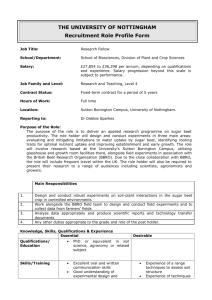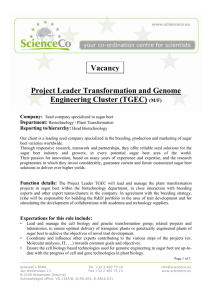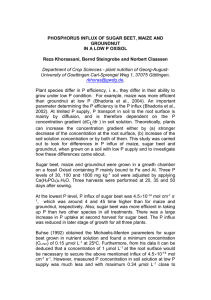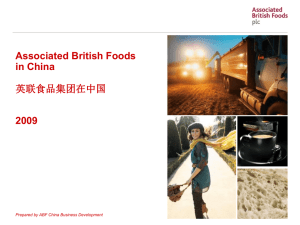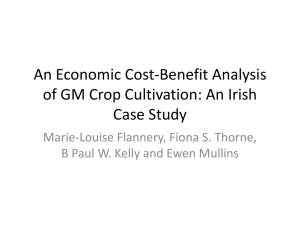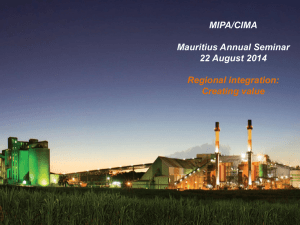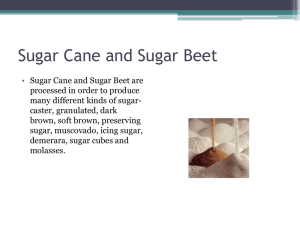Country Crest
advertisement
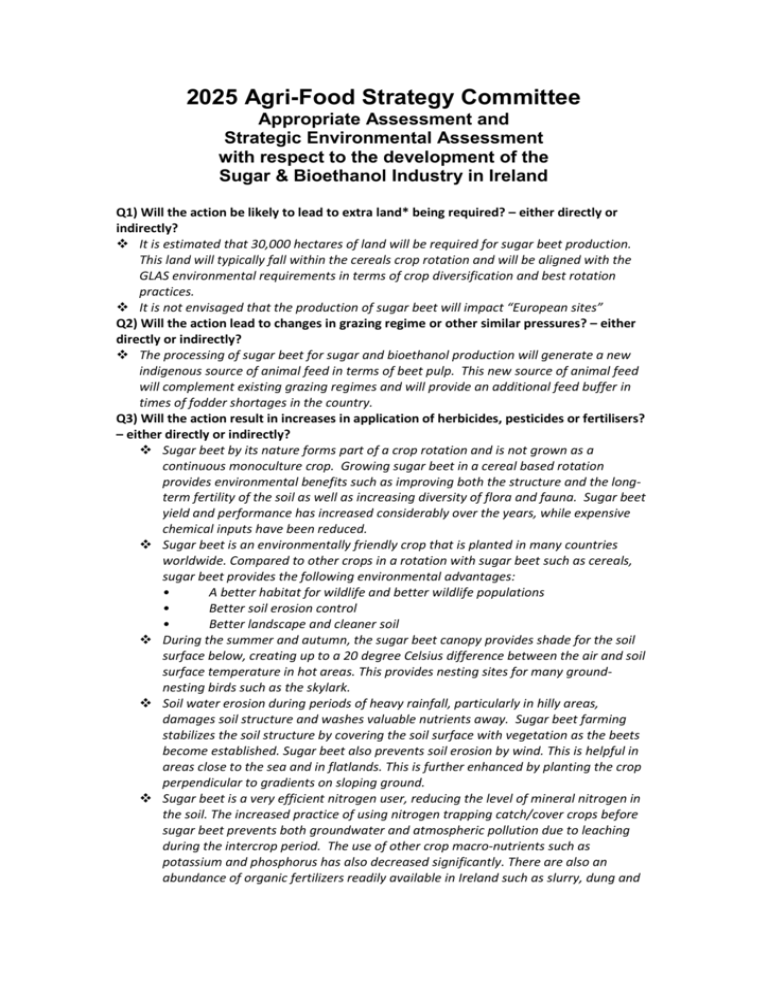
2025 Agri-Food Strategy Committee Appropriate Assessment and Strategic Environmental Assessment with respect to the development of the Sugar & Bioethanol Industry in Ireland Q1) Will the action be likely to lead to extra land* being required? – either directly or indirectly? It is estimated that 30,000 hectares of land will be required for sugar beet production. This land will typically fall within the cereals crop rotation and will be aligned with the GLAS environmental requirements in terms of crop diversification and best rotation practices. It is not envisaged that the production of sugar beet will impact “European sites” Q2) Will the action lead to changes in grazing regime or other similar pressures? – either directly or indirectly? The processing of sugar beet for sugar and bioethanol production will generate a new indigenous source of animal feed in terms of beet pulp. This new source of animal feed will complement existing grazing regimes and will provide an additional feed buffer in times of fodder shortages in the country. Q3) Will the action result in increases in application of herbicides, pesticides or fertilisers? – either directly or indirectly? Sugar beet by its nature forms part of a crop rotation and is not grown as a continuous monoculture crop. Growing sugar beet in a cereal based rotation provides environmental benefits such as improving both the structure and the longterm fertility of the soil as well as increasing diversity of flora and fauna. Sugar beet yield and performance has increased considerably over the years, while expensive chemical inputs have been reduced. Sugar beet is an environmentally friendly crop that is planted in many countries worldwide. Compared to other crops in a rotation with sugar beet such as cereals, sugar beet provides the following environmental advantages: • A better habitat for wildlife and better wildlife populations • Better soil erosion control • Better landscape and cleaner soil During the summer and autumn, the sugar beet canopy provides shade for the soil surface below, creating up to a 20 degree Celsius difference between the air and soil surface temperature in hot areas. This provides nesting sites for many groundnesting birds such as the skylark. Soil water erosion during periods of heavy rainfall, particularly in hilly areas, damages soil structure and washes valuable nutrients away. Sugar beet farming stabilizes the soil structure by covering the soil surface with vegetation as the beets become established. Sugar beet also prevents soil erosion by wind. This is helpful in areas close to the sea and in flatlands. This is further enhanced by planting the crop perpendicular to gradients on sloping ground. Sugar beet is a very efficient nitrogen user, reducing the level of mineral nitrogen in the soil. The increased practice of using nitrogen trapping catch/cover crops before sugar beet prevents both groundwater and atmospheric pollution due to leaching during the intercrop period. The use of other crop macro-nutrients such as potassium and phosphorus has also decreased significantly. There are also an abundance of organic fertilizers readily available in Ireland such as slurry, dung and composts, which will further reduce the reliance for expensive synthetic fertilizers for sugar beet production. The availability of the additional tillage land in the spring earmarked for sugar beet will create additional utilization capacity for farmyard waste and an important opportunity in the context of the abolition of dairy quotas post 2015. Traditional winter cereal land will not be available at a critical post winter period, when slurry and other farmyard storage containers need emptying. The will facilitate further the reduction in synthetic fertilizer use, also minimizing further, the risk of pollution, creating additional environmental benefits to the rural environment. It will allow dairy and beef farmers who are considering expansion, an additional outlet for their waste. It will help them comply with Phosphate and Nitrate Directives by working in tandem with arable farmers more effectively. Ireland’s climate and rainfall levels eliminate the need for water irrigation. Q4) Will the action result in increases of gaseous emissions – greenhouse gases (CO2, Methane), ammonia? – either directly or indirectly? The production and processing of sugar beet will be on par with best practice production systems elsewhere in Europe in terms of GHG emissions. The fact that all current sugar used in Ireland is being imported means that the sugar produced in Ireland will remove the GHG emissions associated with the transport of substituted sugar from other countries to Ireland, as well as the return journey for transport containers that are only used to transport sugar products. Furthermore it is an EU requirement that the construction and operation of the new sugar beet processing plant and bioethanol refinery must be carried out at a very low level of GHG. Most of the modern processing plants in the EU would be in excess of 65% GHG free.
